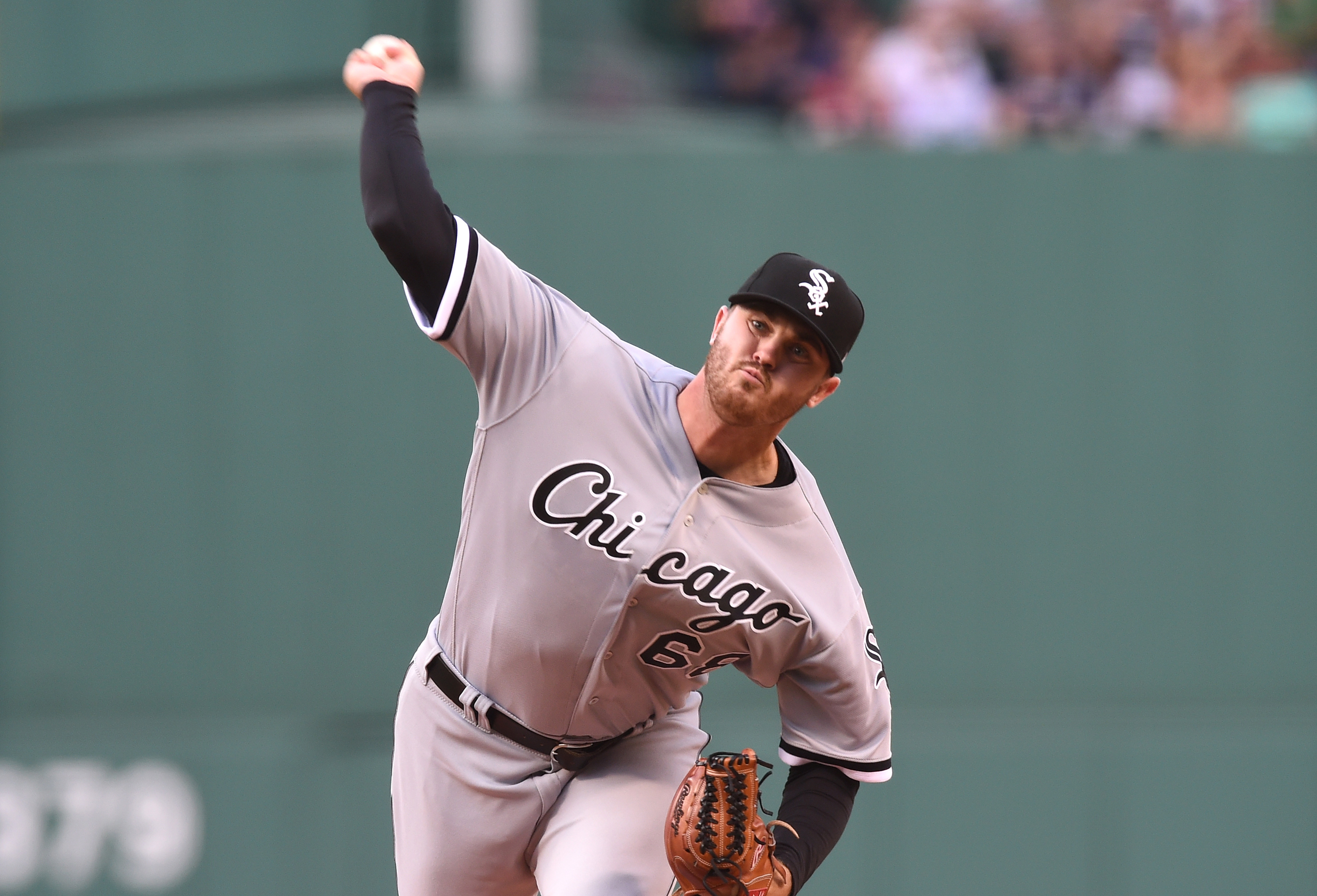Heading into the season, most projection systems–whether based on wisdom of the crowds, publicly available algorithms like PECOTA, or Las Vegas over/unders–had the White Sox winning somewhere in the high-60s or low-70s for the season. A bad team, to be sure, but not memorably so. The 2017 Padres went 71-91. They were bad and boring, but the 2003 Tigers they were not. It takes a lot to lose more than 100 games. Even in this era of tanking, nobody did it in 2017. In fact, only one team has lost more than 100 games since 2013, the 2016 Twins who, amusingly, were very much not trying to lose.* So, heading into June, with the White Sox on pace for 49 wins, there was still plenty of reason better days were ahead. June is certainly looking like Better Days to my eyes.
Not only have they gone 8-5, they’ve done so against the Brewers, Twins, Red Sox, and Cleveland. What’s exciting, however, is that the complexion of the roster is starting to change. Whether this means replacing Carson Fulmer with Dylan Covey, activating Carlos Rodon off the disabled list, or Good James Shields replacing Bad James Shields, they’ve shaved more than half a run off their starting pitchers’ ERA in just two weeks, moving from tied for last on June 1st at 5.76 to 5.21 ahead of three teams.
Covey shoved again on Wednesday, going seven innings and allowing two runs, with five strikeouts, no walks, and by inducing fourteen ground balls. In fact, the two runs were only charged to his account after Cleveland beat a shift with a grounder and Covey left the game with runners on second and third with none out in the eighth. Jace Fry–another internal re-shuffling representing a massive upgrade on his roster spot from the beginning of the year–and got a groundout to a drawn in infield and two strikeouts. Just…the runs scored in between those. Still, Covey looks like a completely different pitcher from 2017. If he had not come back out for the 8th inning, Covey would have logged his second straight start of 5 or more shutout innings, with the last two coming on less than 90 pitches and over six innings. It stands to reason a second year of pitching above High-A would yield some improvement, but Covey is throwing significantly harder with more life, better command, and a swing and miss breaking ball. While I won’t predict any pitcher this side of the mega aces to sustain an ERA of 2.29, that’s not to say Covey is a fluke either. If he can maintain this velocity and command and health, he is absolutely For Real and looks like a mid-rotation starter. That’s a lot of ifs, but this isn’t April 2016 Mat Latos either. By fWAR he’s currently tied with Zack Greinke and Lance McCullers while throwing about half of the innings.** Ground ball specialists who limit home runs and also don’t walk people and also strike out about a batter an inning are a rare breed. Prominent members of that club are guys like Roy Halladay, Brandon Webb, and Felix Hernandez.
Indeed, 2018 at both the major league and minor league level is a reminder that rebuilds come from more than just the highest ranked prospects acquired in trades and first round draft picks. Covey is a reclamation project, for one, but in recent years, the White Sox have done a much better job of finding players after the first round of the draft, and it could be a big part of sustained success moving forward. The 2016 draft supplied Alec Hansen (2nd round), Bernardo Flores (7th), and Ian Hamilton (11th). 2015 provided Jordan Stephens (5th round), who is knocking at the door, as he continues his workmanlike dissection of Triple-A, and Seby Zavala (13th). From the third round on, the White Sox look like they may have found pieces in Luis Gonzalez (3rd), Lincoln Henzman (4th) and Kade McClure (6th). In 2014, the White Sox found the aforementioned Jace Fry (3rd), Jake Peter (7th), and Aaron Bummer (19th).
Obviously, a lot of these guys will still fail. Even the ones who succeed are not likely to be stars. And, obviously, it would be nice if more of their first round picks hit. My point is, however–particularly as I listen to Mets fans grieve and as I recall would-be White Sox playoff teams fail from lack of depth–finding role players and trade pieces late in the draft is such a luxury. Instead of signing Jeff Keppinger, you generate a stopgap from within. Instead of trading for Jeff Samardzija or Francisco Liriano for a playoff push, maybe Jordan Stephens or Jace Fry or Aaron Bummer can fill that role for you. At this rate, Covey may even fill the Jose Quintana role for you.
As 2018 progresses, we should see more fun stories with rookies arriving, whether in the form of goliaths like Eloy Jimenez and Michael Kopech, or less glamorously in the shape of a Dylan Covey or Spencer Adams. It’s really important. The 2012-2016 White Sox didn’t fail for a lack of star power. They failed for a lack of everything else. I’d prefer not to watch that movie again and it looks like we may not have to.
*Ha.
**DRA still hates him, for reasons which aren’t immediately apparent to me.
Lead Image Credit: Bob DeChiara-USA TODAY Sports
